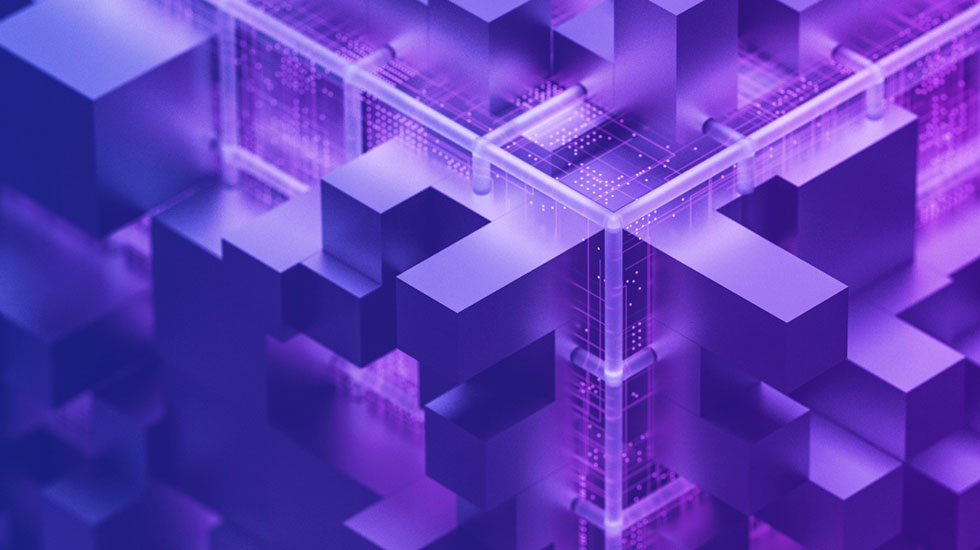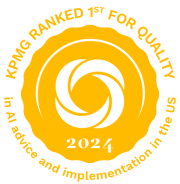Overcoming Top HR Technology Challenges with AI
Five ways to unlock success with AI-driven workforce optimization

Key HR technology challenges and approaches
Human resources leaders face the dual challenge of managing the workforce implications of an evolving AI landscape while simultaneously accelerating the adoption of AI and other innovative technologies to support strategic workforce planning. This shift is poised to transform the way work gets done and requires a proactive approach. Resistance to change, however, often stands as a significant barrier. So, how can human capital leaders encourage lasting adoption of—and tangible value realization from—HR-related technologies?
Shifting to a skills-based workforce
Before
For decades, companies have organized and managed their workforces around roles, filling positions with people whose resumes reflect similar job descriptions. In today’s highly dynamic environment, this approach is no longer viable. The future demands a focus on the skills needed to achieve business objectives. As companies increasingly rely on digital workers for routine tasks like scheduling, progress monitoring, and content generation, it's vital to focus on developing the skills that only humans can bring to the table. Equipping the workforce to fully leverage GenAI tools enhances both productivity and innovation, allowing teams to excel in areas where human insight is irreplaceable.
Core solution
AI-powered skills mapping and inventory
After
Organizations need to shift from role-based to skills-based workforce planning. A critical first step is understanding current internal capabilities as they relate to the skills needed today and those anticipated in the future. By using AI for this inventory and mapping, organizations can gain insights on how to deconstruct current roles and responsibilities to uncover transferable, emerging, and evolving skills. In addition to grouping employees by their skills, AI-powered tools can also deliver analyses of employee performance and suggestions for additional training/upskilling. These insights enable the creation of a strategic roadmap toward becoming a skills-based organization, helping ensure the right skills are in place when needed.
Overcoming resistance to AI
Before
Virtually every organization encounters some obstacles to change when integrating AI tools into their workforce. Employees may be concerned about job security, which can lead to reluctance to adopt new technologies. Meanwhile, existing legacy systems can pose barriers to integration, hindering the effectiveness of AI initiatives. In the face of human and technical “friction,” organizations can lose momentum.
Solution
Structured pilot programs supported by formal communications and change management
After
Starting with pilot programs allows for the identification of technical issues on a smaller scale, enabling targeted roll-outs on distinct tasks to introduce new technologies and prove their value. This approach not only gives employees the opportunity to become familiar with new technologies gradually but also demonstrates their practical value in real-world scenarios. It yields insights for improving subsequent pilots and planning large-scale initiatives. Concurrently, clear and consistent communication about the benefits of AI is essential. Be transparent about how new technology can change day-to-day work—while emphasizing its role as a catalyst for human growth and development, rather than a replacement for human ingenuity. Highlight how AI can enhance employees' skills, open new opportunities for innovation, and allow them to focus on more strategic and fulfilling aspects of their roles. Support this transition with change management strategies that foster trust and acceptance.
Measuring the impact of digital workers
Before
You have a framework for evaluating human employees. But what does “good” look like when it comes to digital workers? When deploying a digital workforce at scale, organizations need rigorous testing and validation of the tasks they’re performing and the decisions they’re making. This is new territory for most organizations—demanding clear expectations for digital “employees,” productivity benchmarks, and metrics for their collaboration with human colleagues.
Core solution
Center of Excellence (COE) within HR
After
A CoE within HR provides a focal point to establish expectations, monitor performance, and quantify return on investment for digital workers. In making these evaluations, the COE needs to take a holistic approach that accounts for all development, maintenance, and operational costs associated with the digital workforce. A disciplined CoE lays the foundation for sustainable AI integration and development, ensuring digital workers contribute effectively to organizational goals.
Workforce Optimization with AI Enhances Efficiency and Drives Growth
Organizations face increasing pressures to enhance productivity, drive growth, and deliver lasting value. To achieve this, many are turning to AI for workforce optimization. By leveraging AI technologies, businesses unlock unparalleled efficiency, foster continuous improvement, and navigate workforce complexities with greater success.
Redefining learning and upskilling
Before
In traditional workforce models, career paths are linear, with learning and development plans aligned to expected career paths. As collaboration between humans and digital workers increases and technology advances, finite training courses are insufficient. Employees need continuous, daily learning—something traditional learning management systems may not support adequately.
Core solution
Culture of continuous learning supported by Learning-as-a-Service (LaaS)
After
Success in a human-digital workforce will require your people to think and act in new ways—and to be open to learning every day. This is both a cultural and a technical challenge. This is both a cultural and technical challenge. Culturally, organizations must invest in continuous learning. Leadership should model this behavior, incentivizing innovation and skill-building. With the culture in place, you also need delivery mechanisms to provide on-the-job learning. Technologically, AI tools are ideal for creating personalized learning journeys, and the LaaS model facilitates quick implementation.
Rethinking the human resources function
Before
Modern HR departments have successfully transitioned to cloud-based systems and HR Shared Services. However, they now face new complexities such as labor arbitrage, an increased reliance on contractors, and the disruptive potential of Generative AI (GenAI). HR leaders are tasked with optimizing the assignment and productivity of diverse labor types while managing risk, adhering to regulatory changes, and fostering a cohesive corporate culture both locally and globally.
Core solution
Workforce Management operating model
After
The evolution from personnel management to human resources, and sometimes employee experience, has prepared HR departments to further advance into workforce management. This change signifies a strategic expansion of capabilities to re-imagine how work is allocated across human and digital labor. Key components include:
- Integration of Diverse Labor: Developing processes for effective allocation and integration of human and digital talent.
- Automation and Efficiency: Automating remaining administrative tasks to prioritize strategic initiatives.
- Skill Development: Cultivating new competencies among professionals to utilize emerging analytical and operational solutions.
- Performance and Adaptability: Enhancing performance assessment and making continuous adjustments to align with evolving business needs.
As the labor mix is set to evolve significantly within the next decade, there is an urgent need for HR to adapt rapidly. Embracing these changes is crucial to expedite this generational shift and position organizations to excel in a future-oriented workplace.
Bringing it all together
Strategic AI integration involves balancing human and digital workers, fostering continuous learning, elevating operational efficiency, and aligning with organizational goals. KPMG LLP (KPMG) supports this evolution through tailored workforce strategies, advanced technological integration, and ongoing change management. Our services include:
- HR Transformation: Transform your HR function into a modern Workforce Management function to serve the organization in the emerging age of coexisting and interdependent human and digital labor
- Human Capital Advisory: Creates tailored strategies for workforce optimization and talent management.
- Digital Enablement: Leverages advanced tools for skills inventory and mapping, as well as overall workforce capability optimization.
- AI Workforce Solutions: Designs and implements AI-driven solutions to improve operational efficiency.
- Technology Integration: Thoroughly integrates advanced tools, such as Workday and ServiceNow, into an enterprise to enhance operational efficiency.
- Learning as a Service (LaaS): Designs and implements continuous learning programs to help your workforce stay ahead of dynamic challenges.
Our detailed approach enables HR leaders to fully leverage innovations in HR/talent technology to unlock workforce value, achieve significant ROI, and maintain a competitive edge.
Case in point: Wendy’s recipe for impactful HR transformation

Before
Wendy’s recognized the need to modernize its HR operations, including streamlining processes to improve efficiency, reduce administrative burdens, and provide better support for the workforce. The company’s existing system lacked the integration and flexibility necessary to keep pace with evolving HR needs, risking employee productivity and satisfaction.
Solution
KPMG implemented a significant HR technology upgrade powered by Oracle’s cloud-based Human Capital Management (HCM) system.
After
With this system integrated efficiently into Wendy's existing infrastructure, the company is enhancing operational efficiency and benefiting from real-time insights into workforce dynamics. Wendy’s success in deploying a “people-first” system illustrates how leading-edge technologies like Oracle’s cloud-based HCM platform can rapidly transform gaps into competitive advantages. The enhanced employee experience is a significant improvement, especially in today’s hypercompetitive labor market.
The new system offers a future-ready enterprise talent management technology system that delivers real-time data decision-making tools, consistent workflows, and digital-first capabilities. Additionally, it significantly reduces the potential for consequential errors (for example, miscalculated wage payments or missed tax deductions), while streamlining compliance management and reporting. Finally, the Oracle HCM system is highly adaptable and scalable—so it’s easier to add new features like Oracle’s Generative AI (natively built within the platform) to keep businesses on the leading edge.
Get the full story.
Workforce Optimization with AI Enhances Efficiency and Drives Growth
Organizations face increasing pressures to enhance productivity, drive growth, and deliver lasting value. To achieve this, many are turning to AI for workforce optimization. By leveraging AI technologies, businesses unlock unparalleled efficiency, foster continuous improvement, and navigate workforce complexities with greater success.
Begin Your Journey Towards Maximizing AI-Driven Workforce Innovation with KPMG
As organizations continue their AI journeys, KPMG LLP (KPMG) offers a human-centered solution to help address workforce challenges and futureproof operations. Our tailored approach helps ensure your workforce, operating model, and technological maturity are precisely aligned. From identifying AI-enablement opportunities to integrating digital workers and reshaping roles, we help you achieve sustainable success.e.
Our proprietary workforce insights model and agentic-AI tools enable organizations to implement advanced workforce planning strategies effectively. Customized AI agents harness robust datasets to provide actionable intelligence, helping companies conduct talent opportunity and deployment assessments and securing the right mix of digital and human skills to meet their strategic needs.
Enable your organization with KPMG AI Workforce >
Unlock AI Workforce Opportunities
Identify and capitalize on AI opportunities across the entire workforce, including human and digital labor. We help ensure your organization maximizes efficiency and productivity by maximizing the impact of AI.
Redesign Jobs and Roles with AI
Take a human-centered approach to redesigning jobs, roles, and occupations to help maximize the impact of AI. Our experts help reimagine your workforce structure so that human and digital workers can effectively capitalize on each other's strengths for optimal performance.
Drive AI Engagement and Adoption
Activate change at all organizational levels, building awareness, understanding, and commitment to incorporating AI into daily work processes. We help create a culture that embraces AI, enhancing collaboration between human employees and AI agents.
Enhance AI Learning and Development
Deliver role-specific AI and Generative AI learning programs, continuously updated to equip your workforce with the latest skills and knowledge. Our tailored training helps ensure your employees stay ahead of the curve in a rapidly evolving digital landscape.

KPMG ranks #1 for quality AI advice and implementation in the US
According to senior buyers of consulting services who participated in the Source study, Perceptions of Consulting in the US in 2024, KPMG ranked No. 1 for quality in AI advice and implementation services.
Insights to help you elevate your workforce operations
What sets apart good from great workforce leaders? It's their ability to harness innovative technology to drive efficiency and foster growth.
Popular category topics
Subscribe to Human Capital Real Insights: Delivering in today's world of work
Subscribe to Human Capital Real Insights for access to research, analysis, and events to help you gain strategic insight and position your enterprise for a competitive advantage.
Meet our team
The KPMG Human Capital Advisory team helps organizations implement advanced workforce strategies by leveraging our proprietary workforce insights model and AI tools. Teaming with KPMG helps ensure that organizations can effectively conduct talent opportunity and deployment assessments, securing the right mix of digital and human skills to meet current strategic needs and realize sustainable growth.






